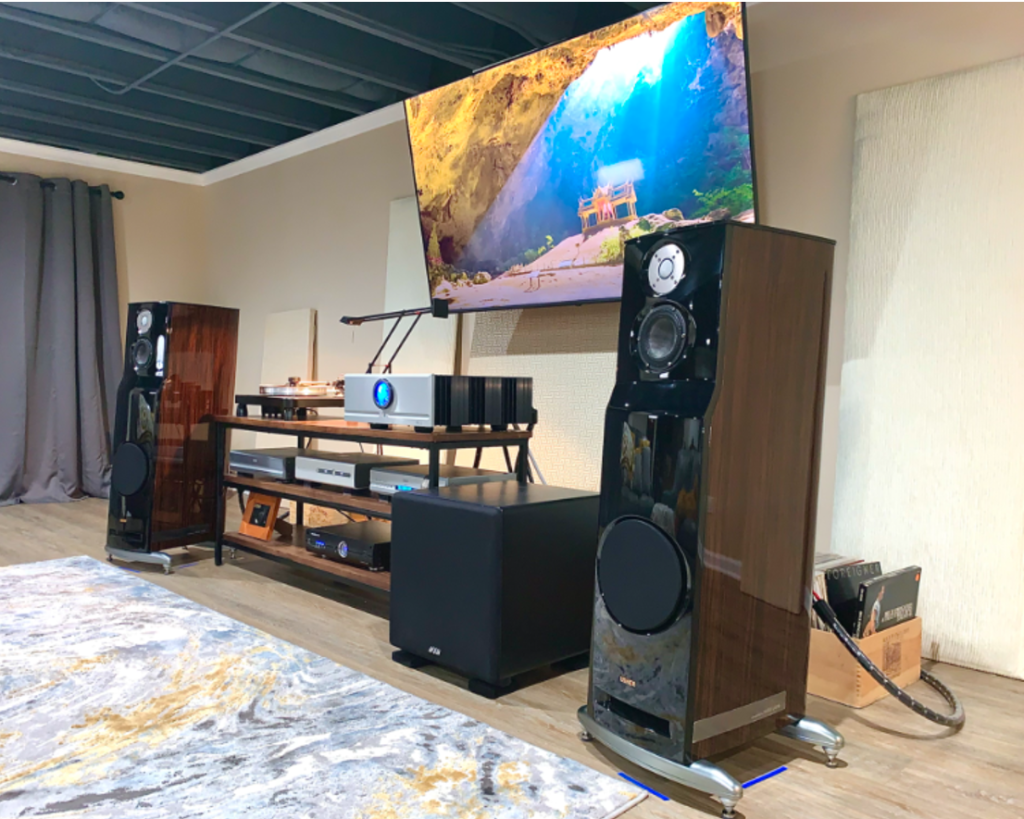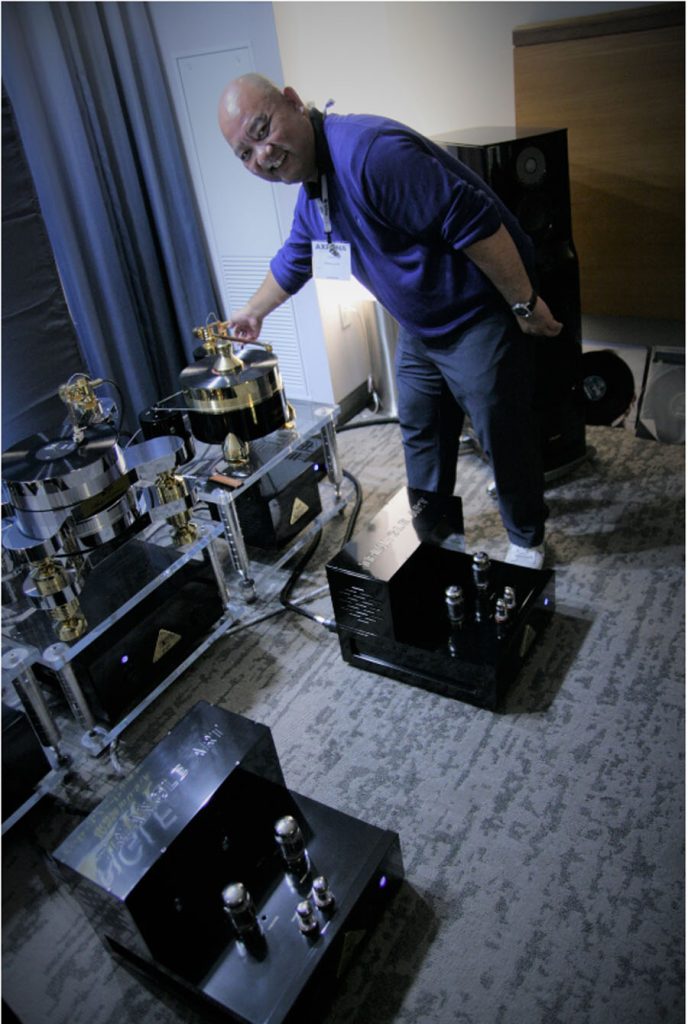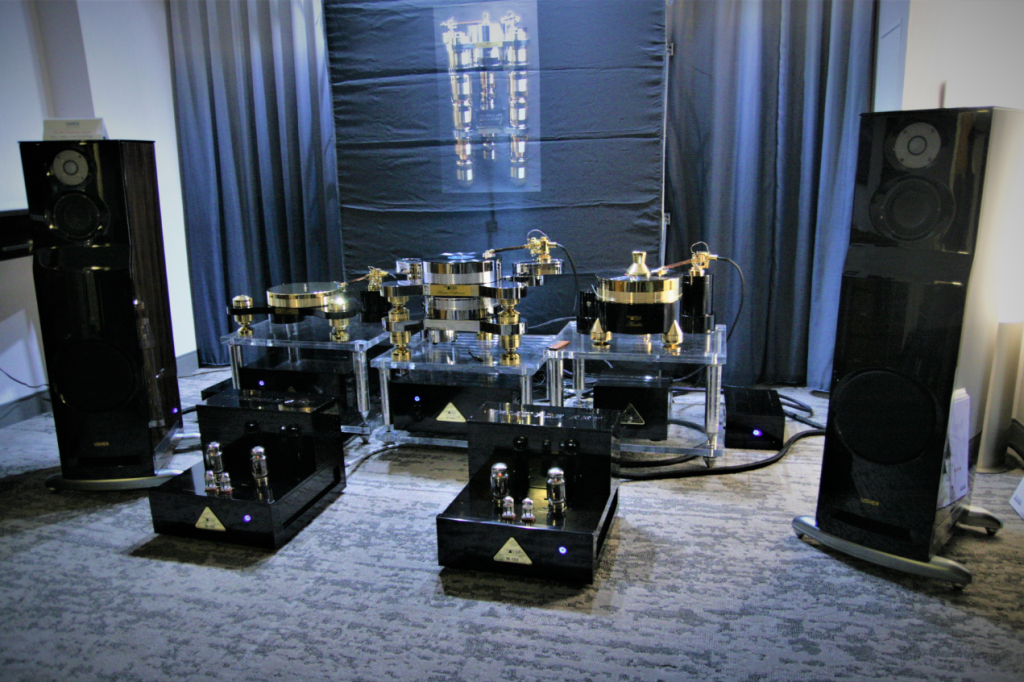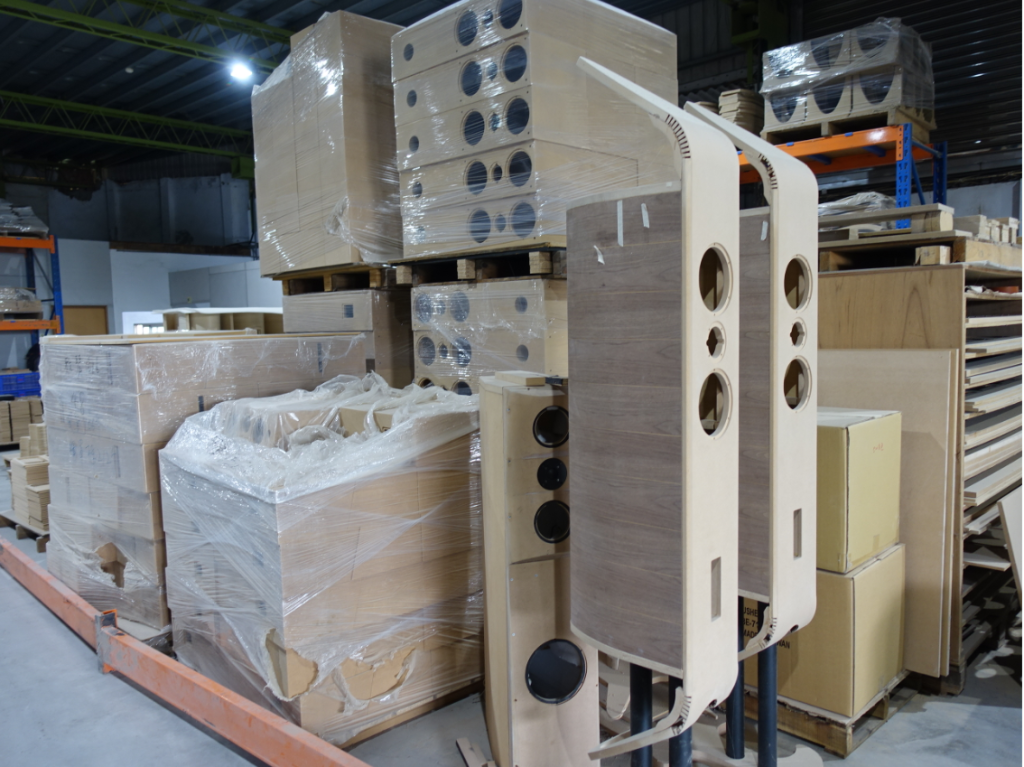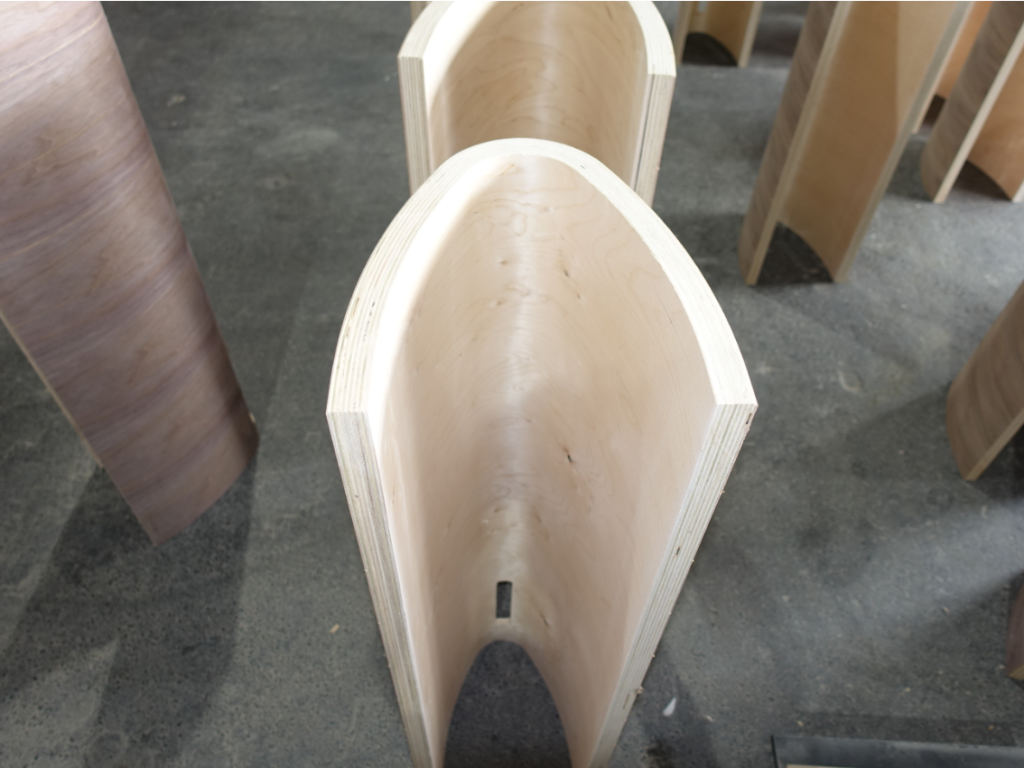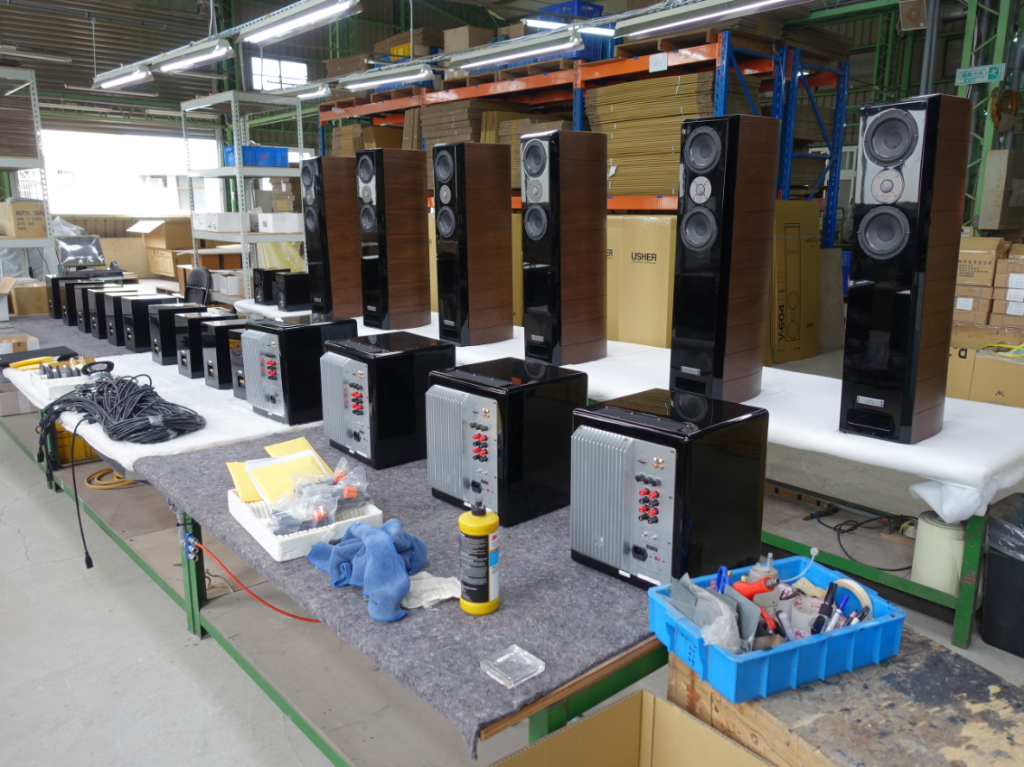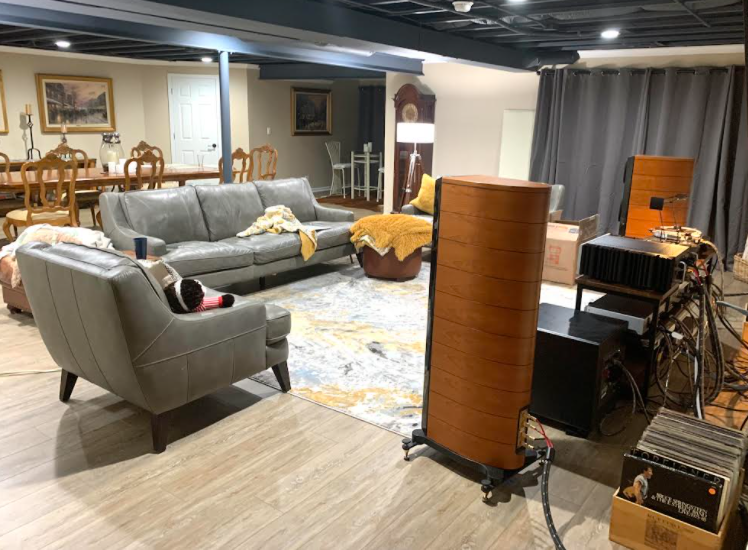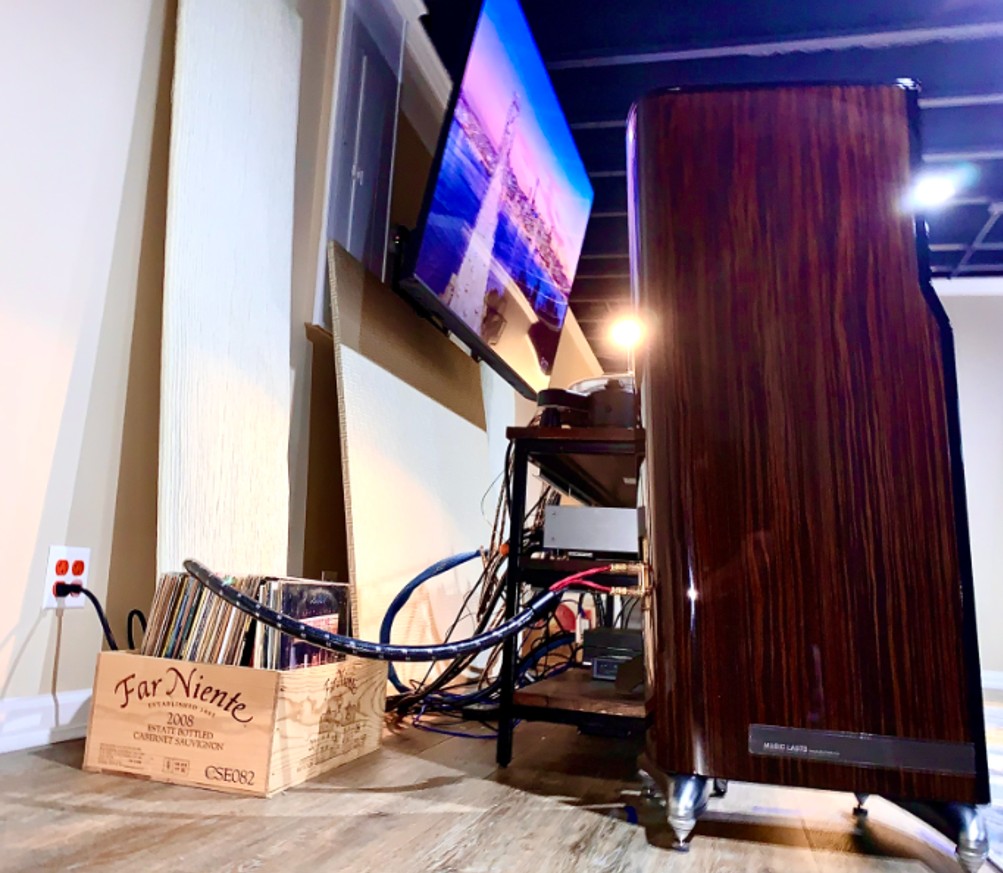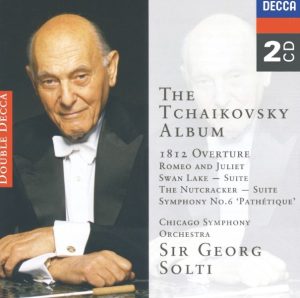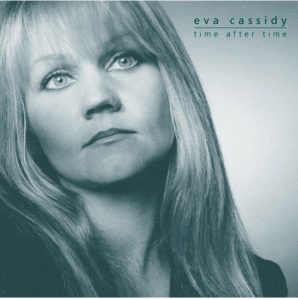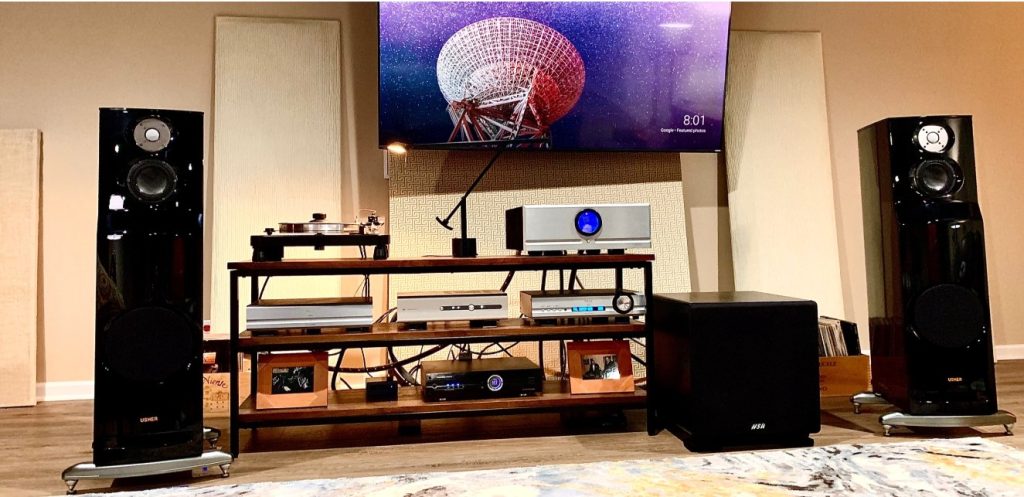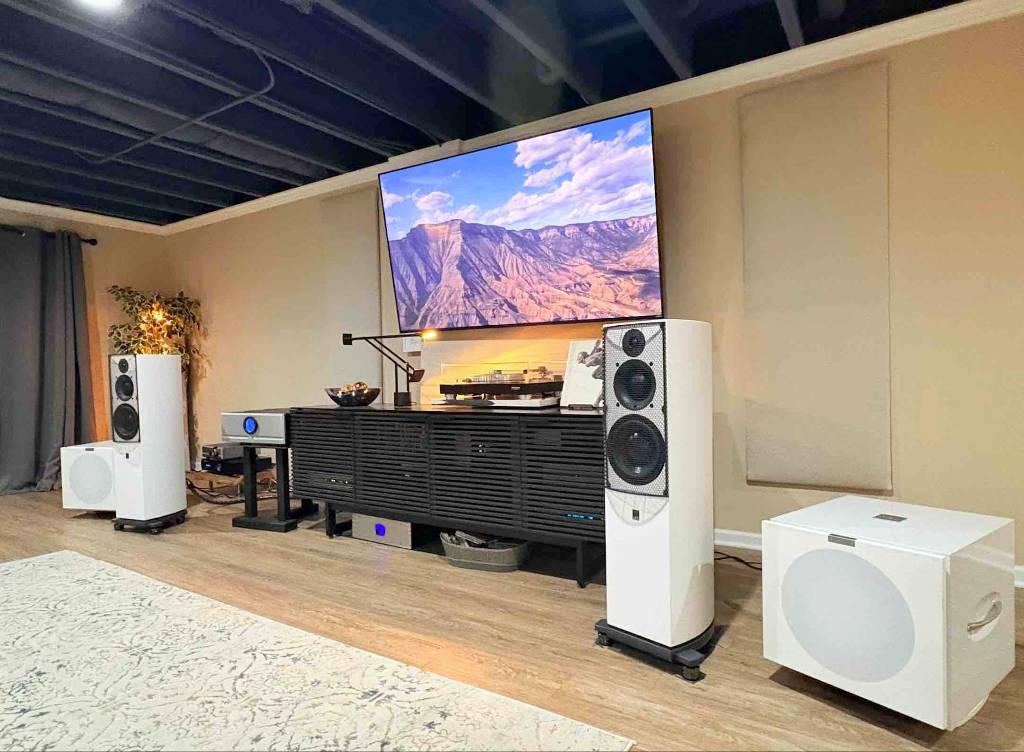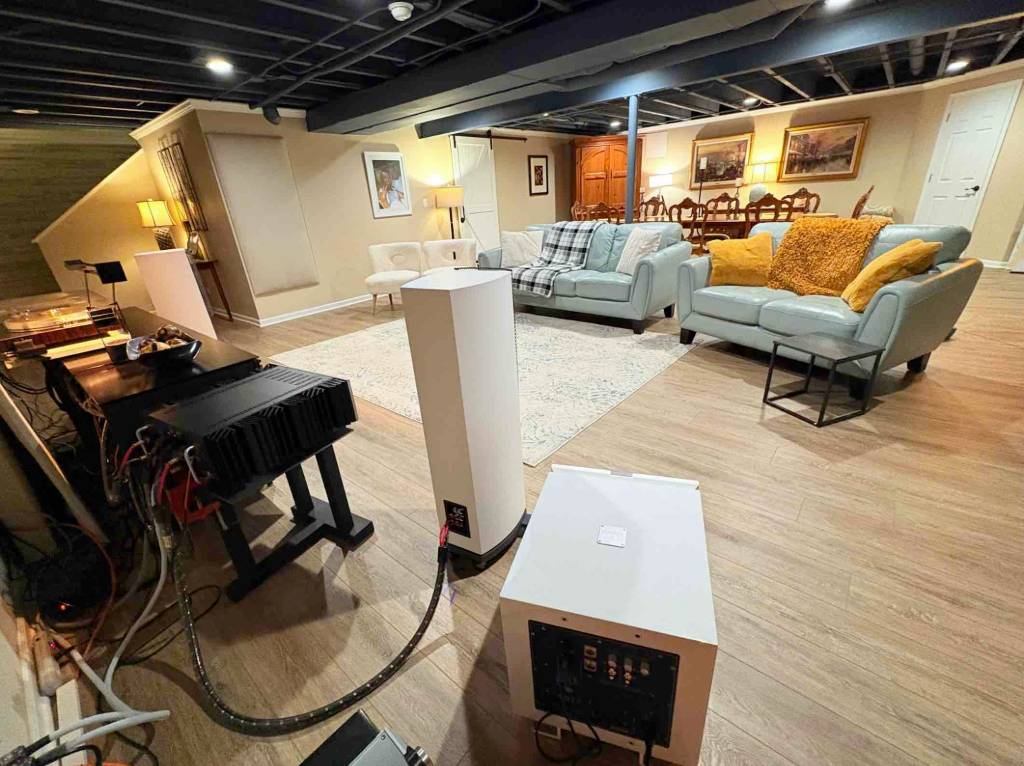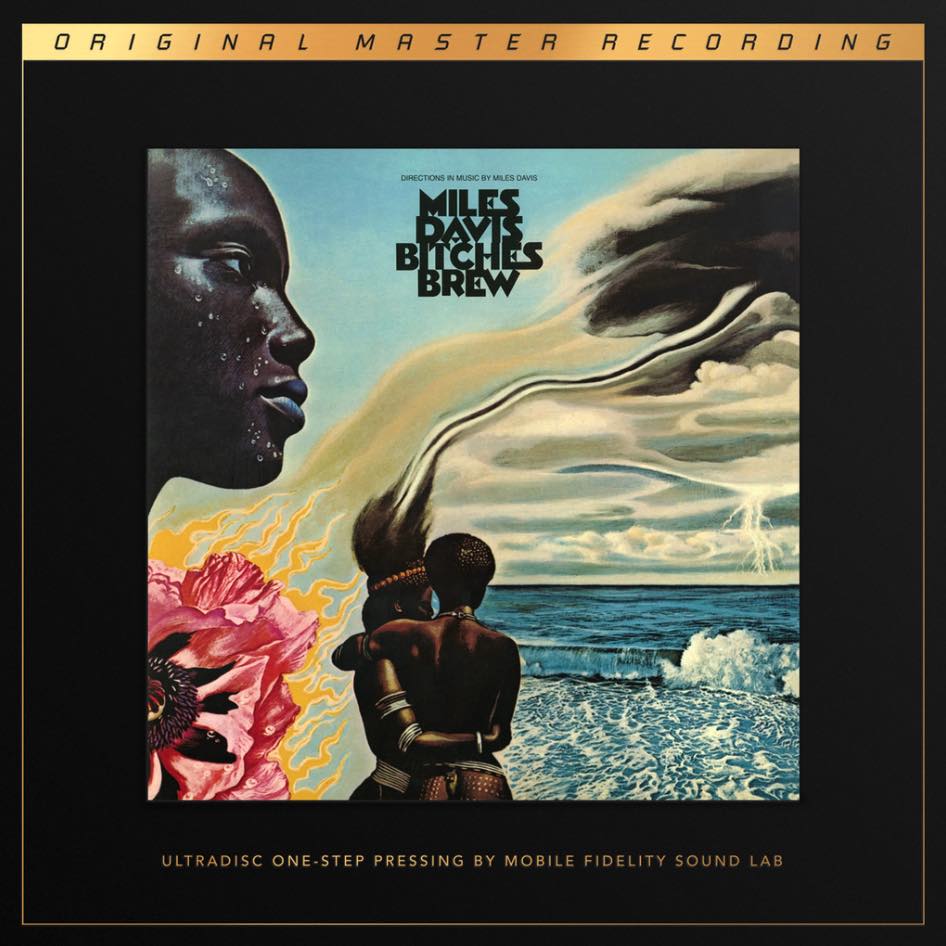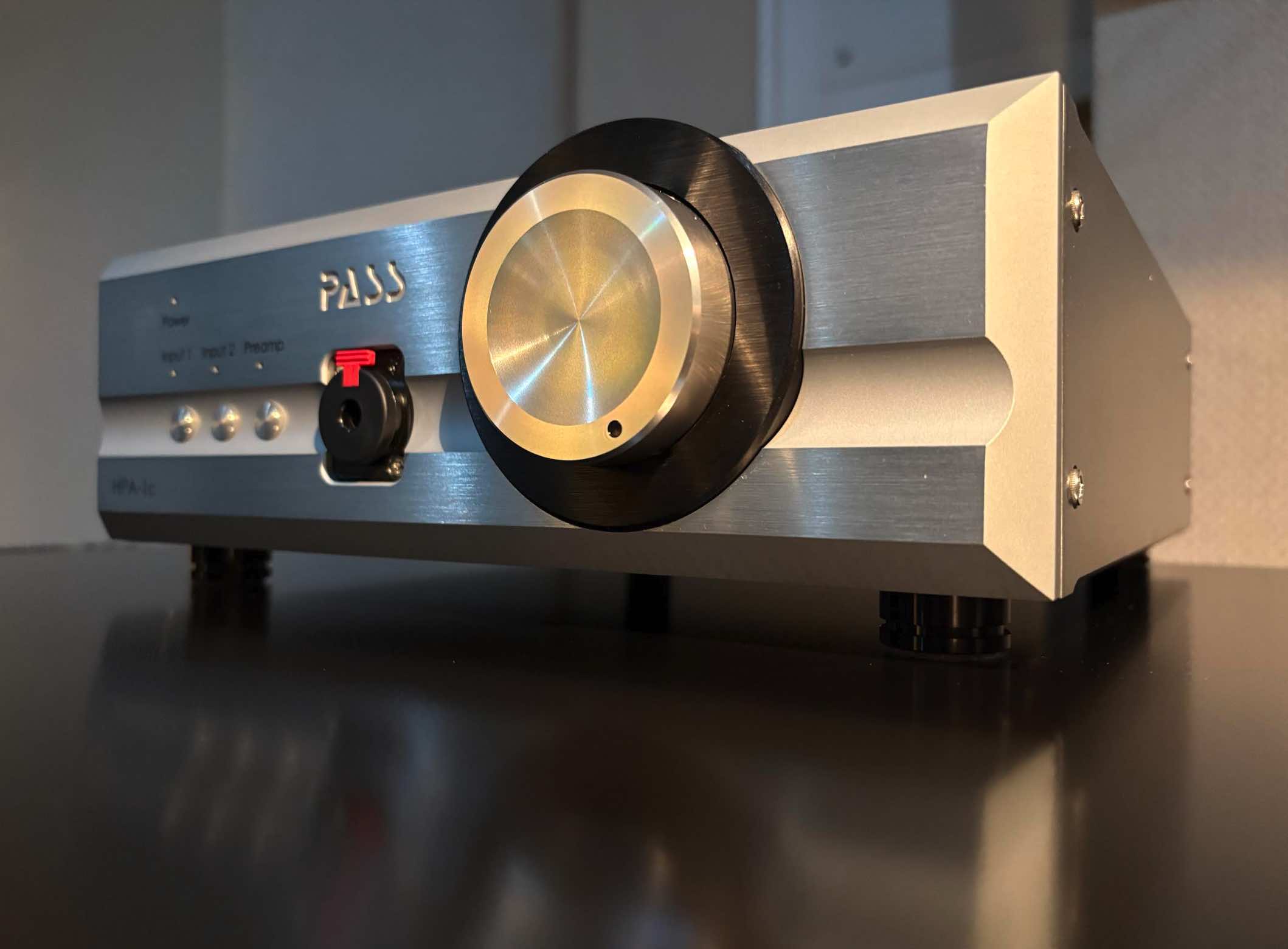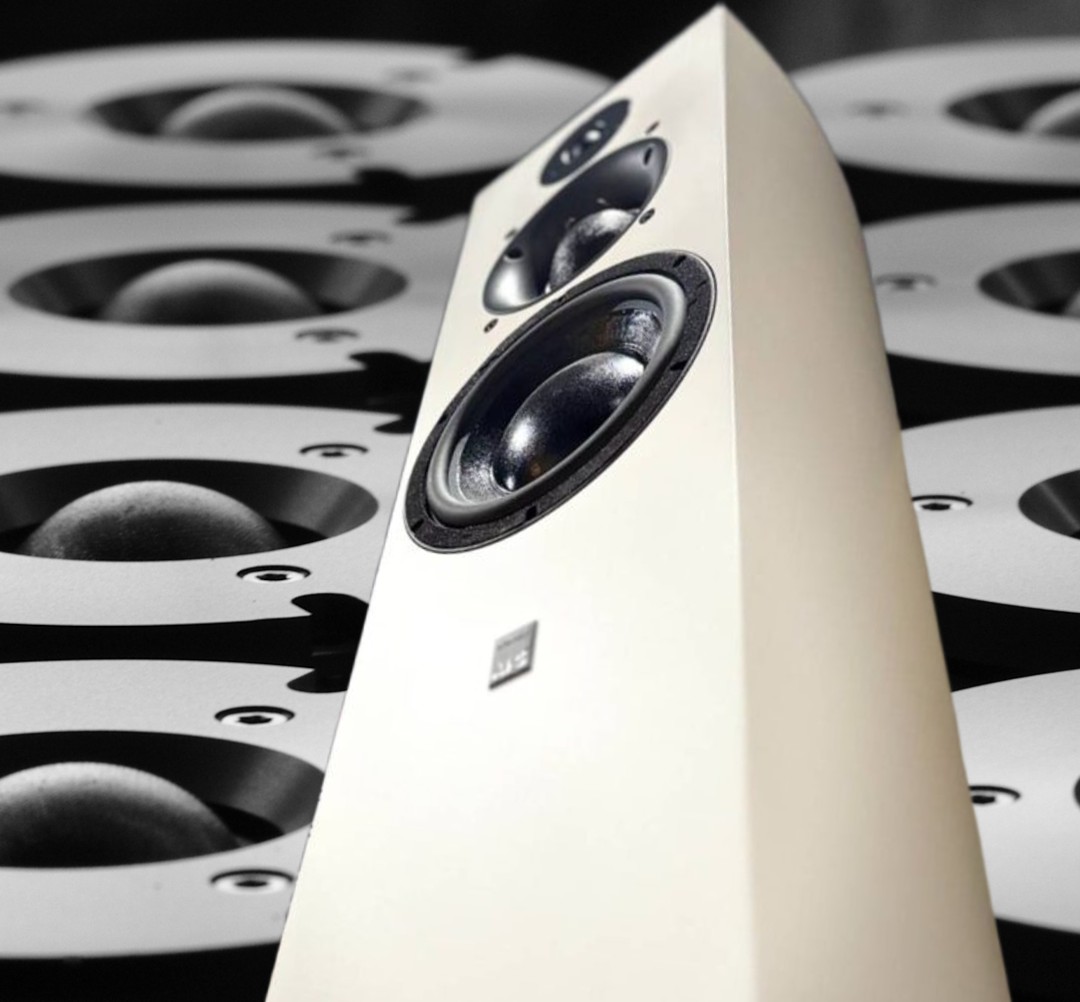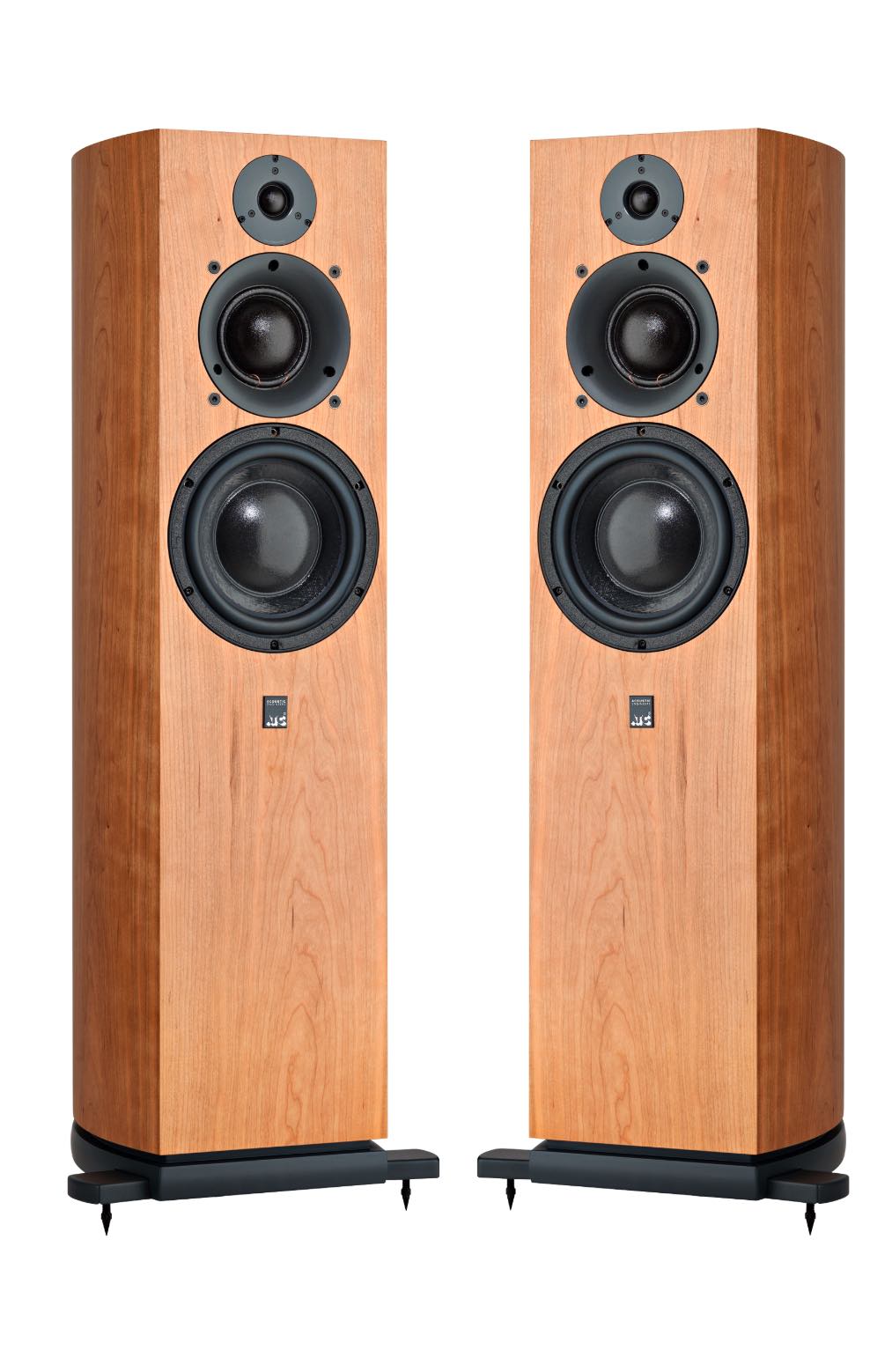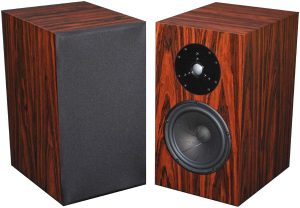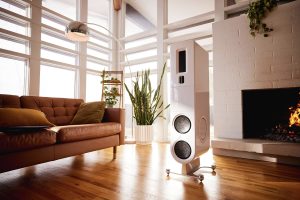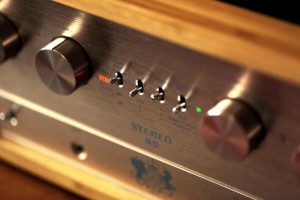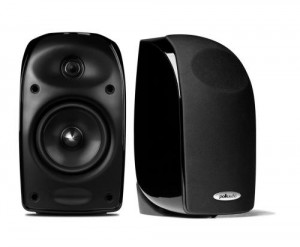Staring out from the darkened hotel room, two sculpted, burly figures stand guarding the glistening golden and onyx tinted treasures between them. Suited in matching, high gloss Macassar Ebony with piano black faceplates angled back and studded with a tweeter and two drivers, at nearly four feet tall, they can swing and punch with the best of them.
The Usher Audio ML-801 loudspeakers were featured in the Triangle Art display at AXPONA (Audio Expo North America) 2022 held at the Renaissance Hotel and Convention Center in Schaumburg, IL last April.
The three way, three driver design of these Usher ML-801 loudspeakers sports a 1.25" magnesium alloy tweeter and five inch magnesium-lithium alloy midrange driver in tandem with an eight inch hybrid carbon fiber woofer on a sloped, two tier front baffle (for time alignment, the woofer sits on the lower section, several inches forward of the tweeter and midrange above), delivering the signal with striking clarity and depth. Horizontal elliptical waveguides surround all three drivers to yield a wider sound dispersion.
Two-thirds down their backside, two pairs of high quality binding posts come equipped with jumpers that can be removed for bi-wiring or bi-amplification. And underneath the Usher name plate upfront, there is a long rectangular port, giving full expression to the bass.
Finished in transparent lacquer and capped with a black glass panel, the ML-801 resembles high grade modern furniture. They are available in walnut and Macassar ebony satin or high gloss wood finishes. (The featured review pair came in high gloss Macassar ebony). At the bottom, it sports a thick steel plate, and in between, it's multi-layered and curved to control resonances—with internal bracing milled from a solid block of MDF.
"The front baffle and bracing is made from MDF, while the main, U-shaped frame of the speakers that curves around back is made from thin, laser-cut layers of walnut using very heavy pressure and heat treatment to bend it," Fred Kat, proprietor of Usher Audio USA, says. The official distributor for the U.S. and Canada, he adds, "There's no grooves, no glue; it's just one piece from front to back, and it's more of a flat U shape than the sharp U shape of the Mini Dancers."
Tying it all together, their kicks are an industrial pair of gleaming oblong silver steel supports on conical spikes that protrude several inches to either side, stabilizing them with panache.
Initial Impressions
It's Day One at AXPONA, where they captivate visitors with their authority and finesse—and it's my first time hearing the Usher ML-801s.
Rendered in vinyl on the gleaming, dual plinthed, machined gold and black Triangle Art Master Reference turntable ($39,990), the timbre of Andrea Bocelli's vocals are natural and rich, while the orchestra's strings, woodwinds and the piano are clearly articulated in this rich and refined presentation.
The platter is still spinning when Triangle Art's CEO, Tom Vu, deftly removes the record clamp from the Master Reference and places it atop another plattered record on the $15,500 Triangle Art Anubis turntable and hits play. Relaxed in a blue sports shirt, jeans, and white socks, clearly he's done this a few times. Seconds later, Ella Fitzgerald's mezzo soprano vocals shine forth in their tonal purity, while Armstrong's grit and gravely baritone enchants in Louis Armstrong's "Can't We Be Friends."
It's breathtaking, but I have to run. However, I catch a second listen the next day and am mesmerized by Dave Brubeck's "It's a Raggy Waltz," where the ringing, shimmery sound of the ride cymbal, the fleshed out fullness and slam of floor toms, and the resonant drum skins and their cabinets are palpable and stunning on vinyl.
A Starting Point
My only complaint is the impact of the small guest room, sans acoustic treatment, imparting a slight edge to the already detailed image of these towers. After the show ends that Sunday, I bring the Ushers home for review, and there's no hint of harshness, underscoring the tenet that listening to equipment at a show is a starting point, but there's no substitute for hearing it in your own environs.
Home Sweet Home
In this case, listening occurs in front half of the 32' x 22' main space in a finished basement with a painted exposed ceiling that's roughly 9' high and employs a ceiling cloud, an area rug, acoustic absorption panels and bass traps, as well as two 20 amp and two 15 amp dedicated A/V circuits (you can read about the design and finishing process at the link HERE). The speakers' baffles are four feet from the front wall, slightly toed in, and roughly ten and a half feet away from the primary listener position centered on a leather couch. This is where my evaluation really begins.
Thoroughly impressed, Belle and I spend three spellbound evenings the following week listening—and dancing—to their evocative presentation before settling into our nightly rhythm of listening, dining, and HDTV show consumption.
But First a Word on Usher Audio
It's been 50 years since Usher sprouted from a small audio shop in 1972 into the highly respected, value driven audio manufacturer they've become. Now based from its newly completed factory in Taichung, Taiwan, they continue developing, designing, and spearheading excellent loudspeakers and amplifiers to stringent standards.
"We believe that no-compromise audio components can and should be friendly price-wise to all music lovers and audiophiles," their site says, adding, "They should be a luxury that most people can afford."
Towards that end, they champion a scientific approach, sound engineering, extensive experimentation, and tight quality control measures—resulting, they cite, that, "many of the Usher amplifiers built in the 70s are still actively serving their owners today."
Ushers are the Schiits!
I first experienced the Usher sound four years ago in 2018 when I began reviewing the Usher Mini Dancer 2 DMDs. I was so taken with these tower speakers that I purchased the pair. Featuring the D'Appolito array with a DMD tweeter (featuring a proprietary diamond-like carbon layer coating on a metal alloy) between two seven inch mid-low woofers, they retailed for $5300—but their sound, top to bottom, was rich, deep, balanced, detailed and punched way above their price point.
The Usher Mini Dancer 2 DMDs in my listening space
"You'll never find a better speaker for under 10 grand," an experienced insider advised. "They may sound different, but they won't be better."
A year later, I reviewed the Usher SD-500 DMD monitor speakers ($2000) and was pleasantly surprised with their striking similarity—sans the depth of the Mini Dancers. Combined with a great subwoofer, they delivered a superb aural experience for their price and size.
And a month after that, I reviewed the $22,000 Usher TD-10 loudspeakers, which feature a DMD tweeter, DMD midrange, and 10" Eton bass driver. Although they had a similar sound signature, they packed a richer, more luxuriant aural delivery (you can read the review HERE).
Several years later, I heard whispers about new Ushers that employed magnesium in their drivers.
"Magnesium is extremely lightweight and fast, making for an extremely detailed and accurate speaker," I was told. "They sound magical! Normally, you'd have to pay $40,000 to hear them in a premium speaker, but with the ML-801 and 802, you can hear them for a whole lot less!"
Why magnesium? Arguably the lightest structural metal available at 1.5 times less dense than aluminum, it is used in the aerospace and competitive automobile racing in magnesium alloy wheels, for example, which are much lighter than their aluminum alloy counterparts but comparably strong. In fact, Porsche chose to use magnesium in the construction of their Porsche 911 GT3 RS roof. Having tested magnesium versus aluminum, and carbon fiber reinforced plastic, magnesium came out on top, saving them ten kilograms of weight in total, making it the strongest and lightest material (source: www.mifa.eu).
"Ushers are the Schiit Audio of loudspeakers!" another experienced audio veteran exclaimed.
Like Schiit, he explained, they offer great value for the money (as the owner of a Schiit Audio Yggdrasil Analog 2 DAC, I agree— read more HERE). He'd recently purchased my Mini Dancer 2s, and has since been outspoken about their performance up and down the sound spectrum. Bottom line, he wants a pair of speakers that reveal everything when he's mixing music recordings. However, for me, this sale opened a window of opportunity.
The ML-801 and 802s they were designed to bridge the gap between Usher's Dancer series and their flagship TD lines. Boasting more refined internal components and crossovers, better bracing and a deeper cabinet than my Mini Dancers, they piqued my curiosity. Already impressed with the Usher house sound, I was fascinated with the idea of experiencing these first hand. Hence, when the opportunity finally arrived, I pounced.
Specifications
- Tweeter 1.25" (9980-20MA)
- Midrange 5" (0542MA)
- Woofer 8" (8955A)
- Sensitivity: 87dB at 1 watt/1 meter
- Nominal impedance: 6 ohms
- Frequency response: (-3dB): 28Hz to 38kHz
- Power handling: 160 watts
- Crossover frequencies: 350Hz, 2.1kHz
- Weight: 52 kg (including base)
- Dimensions (W x D x H): 48 cm x 54 cm x 116 cm
A Blue Whale and a Listening Test
Solemn and surreal, John Clayton's bowed double bass is a blue whale rising from the depths of a blackened azure soundscape with ponderous arcs of its tail flukes—it's huge, sonorous, and exquisite. Comping and keeping time through this sublime solo in "Water's Edge" (Gerald Clayton. Bells on Sand. Qobuz FLAC 96kHz 24-bit. Blue Note Records, June 6, 2022), Gerald Clayton's piano takes over with strength and reserve, suddenly breaking free, sparkling in the upper registers against the splash and crash of Justin Brown's cymbals and toms. Hammer strikes on strings are tangible, and mixing with the shimmering cymbal swells and drum skin bursts are captivating, delivered with astonishing detail and weight via the Usher's magnesium alloy midrange driver and tweeter, in tandem with its eight inch carbon fiber woofer.
It feels like I pulled up a couch in a garage rehearsal, except there's a cheering crowd. Nix that! It's the House of Blues in Chicago, and the John Mayer Trio is playing "I Got a Woman." (Try! Qobuz FLAC 44.1kHz 16-bit, Columbia Records, November 22, 2005). It's room-filling and raw as Steve Jordan's snare, toms, kick drum, and hi-hat set the banging and impactful tempo, Pino Palladino's deep electric bassline joins in, followed by John Mayer's growling 2005 Fender Stratocaster, and when Mayer's falsetto, "She did me wrong…" joins the fray, I'm hooked. Excellent and intimate, this face-first recording finds full expression on the Usher ML-801s.
The strings sound rich and stately in their elegant introduction of "1812 – Festival Overture, for orchestra in E flat major" (George Solti, Chicago Symphony Orchestra. The Tchaikovsky Album. FLAC 44.1kHz 16-bit, Decca June 9, 1998), and the woodwinds, soft and melancholic as they join in. The aural textures as they rise together as one are beatific and moving. There is a very real sense of the hall's space as the visceral crash of the timpani drum unleashes progressive waves of violas, double bass, woodwinds and brass in exquisite detail, richness and timbre. It's the Fourth of July as thudding cannon fire punctuates the wondrous and triumphant crescendo on this masterpiece —and the ML-801s with incredible depth and emotion. It's the best rendition of this classic that I've heard at home.
I am enchanted with Eva Cassidy's fingerpicking arpeggio on her steel stringed Guild Songbird acoustic guitar, vivid and compelling, that lays down a frenetic and textured backdrop to her clear, silky soprano vocals on "Kathy's Song" (Eva Cassidy. "Kathy's Song." Time After Time. Qobuz FLAC 44.1kHz 16-bit. Blix Street, January 9, 2011). Her purity, power and emotion are rousing, cutting through the noise, and forcing you to take notice in this bleeding soul outpouring of this poignant Paul Simon ballad. And the engaging aural manner in which it's delivered is vivacious and utterly engrossing.
(Note: Roon 1.8, a premium digital music management and playback software, was used throughout my listening sessions.)
AV Delight
But that's not all; for the last several months, Belle and I have enjoyed HD movies and television with renewed enthusiasm. With a more clearly articulated midrange and a richer, fuller presentation, soundtracks never sounded better, and as for action and drama, the Ushers deliver a home theater experience worthy of the AV gods!
Image courtesy of imdb.com
The 2022 Netflix science fiction thriller, Spiderhead, was especially bountiful for great sounding music. Hit such as "The Logical Song" (Supertramp), "What a Fool Believes" (Doobie Brothers), "You Make My Dreams (Come True)" (Daryl Hall and John Oates), "She Blinded Me with Science" (Thomas Dolby) and "Crazy Love" (Poco) sounded wonderful, but as the credits rolled and my mate took to the stairs, I was especially taken and heard myself call out, "Hey, Belle, come back—you've got to hear this song!"
Herb Albert's 1979 hit song, "Rise," was playing and I was simply mesmerized. Listening on Netflix via optical cable hooked to my system, I heard details in this yacht boat classic that I've somehow missed all these years. Go figure!
Conclusion
Several weeks back when I shared my initial impressions on an audiophile group on Facebook, someone dismissed my enthusiastic response as so much fluff and subjective drivel. However, when I offered that the ML-801 features better crossovers, internal components, more rigid bracing and deeper cabinets, he went silent. That's not to mention the magic of lightweight magnesium alloy tweeter and midrange drivers.
It's a fuller, richer and more articulated through the middle registers than my Mini Dancer Twos.
In my opinion, everything is better.
"You realize that those Ushers easily sound like $30,000 speakers," my industry friend remarked during a recent listening session. I would not disagree.
The other day, someone asked me how the ML-801 compares to the Usher TD-20. My response? I've never heard the TD-20s, and in regards to the TD-10s that I reviewed, that was several years ago, in another system and room. Moreover, I'd be drawing from auditory memory over several years, which would be flawed. What I can say is there were some similarities and, in my new environs, they delivered a better aural presentation—with the caveat of a vastly improved listening room, equipment and accessories (i.e., Pass Labs amplification, flagship Straight Wire cabling, and the aforementioned Yggdrasil DAC—click on my byline at the beginning of the review for more information).
In fact, I am so impressed with the 801s that it was a no-brainer to buy the Usher ML-802s due to my large room (which are slightly larger and offer two woofers instead of one).
That said, the ML-801s are extremely impressive and should absolutely shine in a medium sized space.
Usher ML-801 Loudspeakers
Retail: Satin Finish $11,950; High Gloss Piano Finish $14,750
Usher USA
Usher Audio




